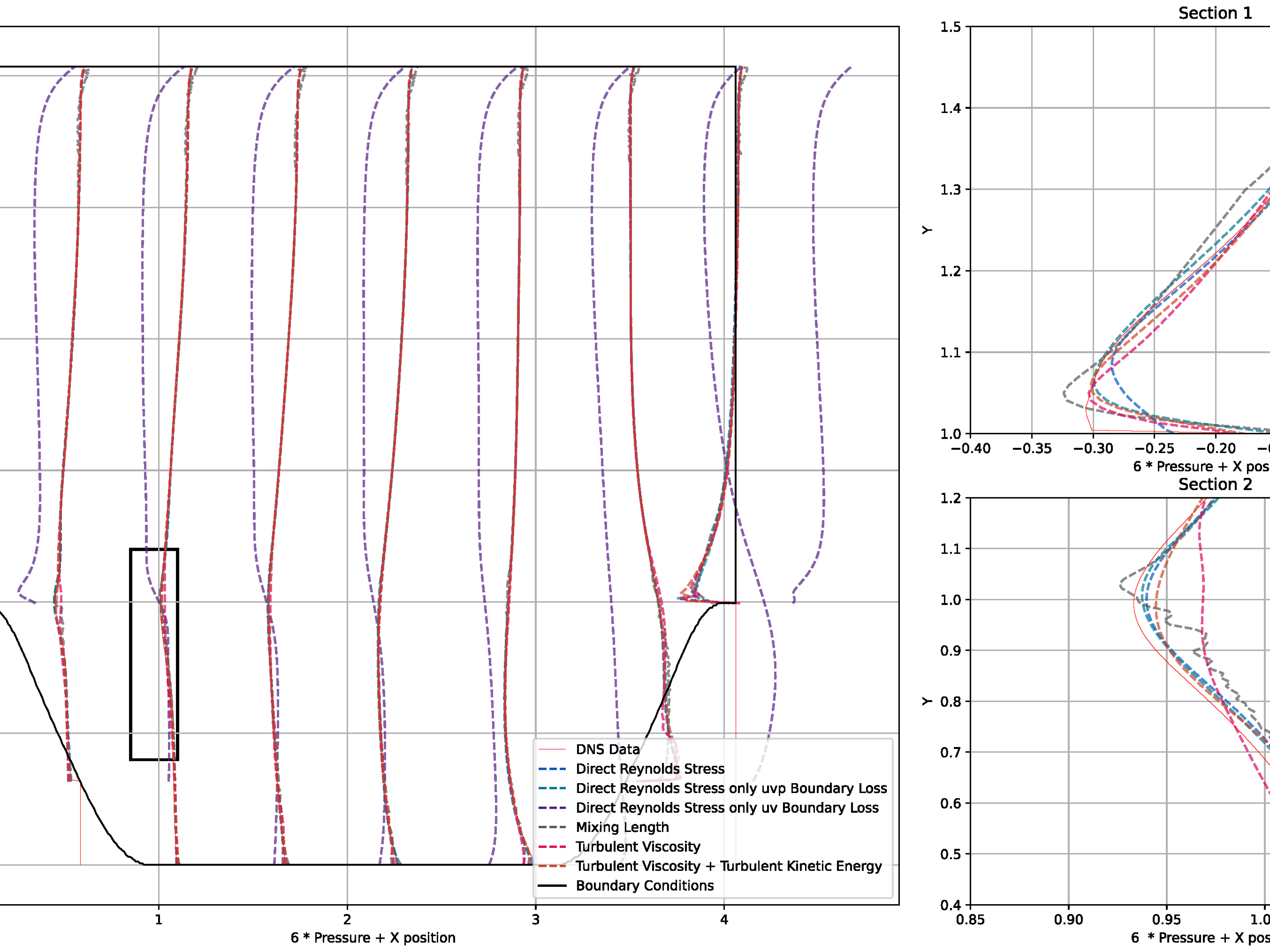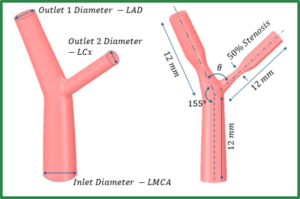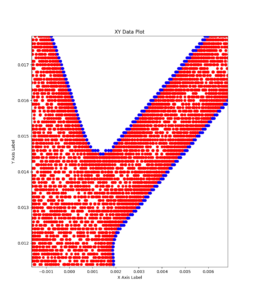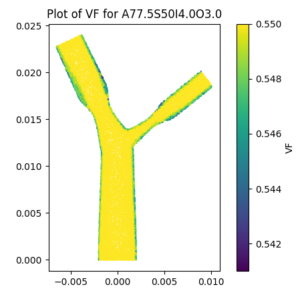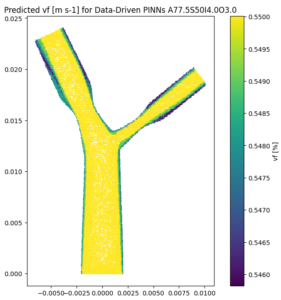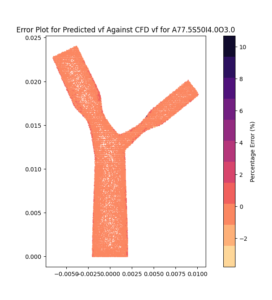Using Physics Informed Neural Networks to Advance Simulations for Predicting Red Blood Cell Count
For the past year I have been developing a Physics Informed Neural Network (PINN) that can accelerate Computational Fluid Dynamic (CFD) simulations. I am now working with my universities and collaborators on getting my paper on the subject published. The idea is to use this model in place of traditional CFD solvers in an attempt to improve solve time, while maintaining accuracy. Currently the model can process 2D slices of an existing geometry (e.g. patients' coronary artery) and infer boundary conditions. It then predicts the velocity of the blood and then further predicts regions where red blood cell count will be increased, and where there is increased risk of arterial thrombosis. Current models have an average percentage error of 2-3% across the whole domain. Shown below are the geometries used for prediction and the plot for VF (Volume Fraction, that represents the red blood cell count as a percentage of the total volume of blood) from existing CFD methods, plot of the predicted VF from the PINNs Model and the relevant error maps.
-------------------------------------------------------------------------------------------------------------------
Optimising Physics-Informed Neural Network Solvers for Turbulence Modelling: A Study on Solver Constraints Against a Data-Driven Approach
I am also co-author for the published paper linked below which features a lot of PINNs work which was shared across both dissertations.
